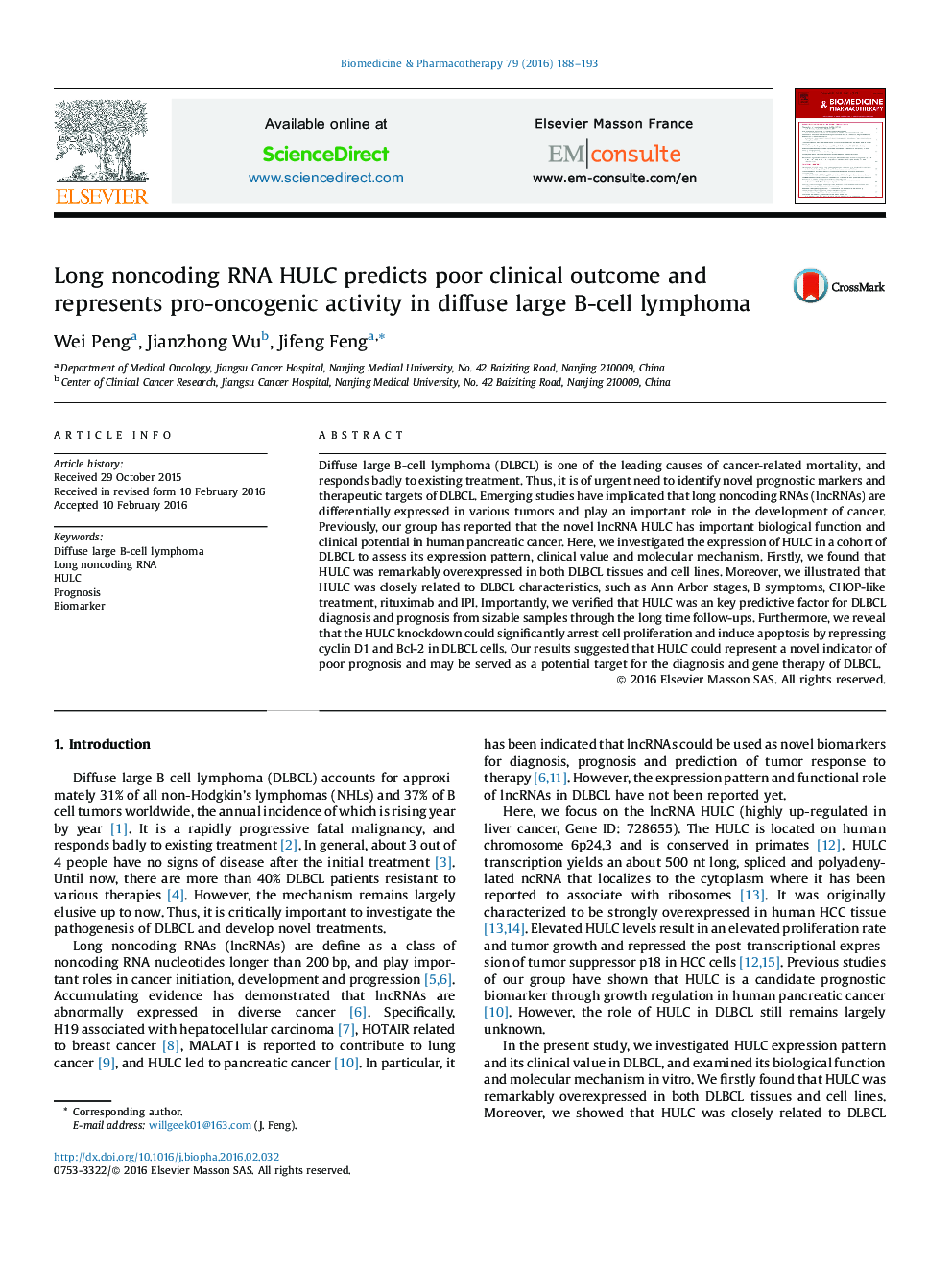| Article ID | Journal | Published Year | Pages | File Type |
|---|---|---|---|---|
| 2524806 | Biomedicine & Pharmacotherapy | 2016 | 6 Pages |
Diffuse large B-cell lymphoma (DLBCL) is one of the leading causes of cancer-related mortality, and responds badly to existing treatment. Thus, it is of urgent need to identify novel prognostic markers and therapeutic targets of DLBCL. Emerging studies have implicated that long noncoding RNAs (lncRNAs) are differentially expressed in various tumors and play an important role in the development of cancer. Previously, our group has reported that the novel lncRNA HULC has important biological function and clinical potential in human pancreatic cancer. Here, we investigated the expression of HULC in a cohort of DLBCL to assess its expression pattern, clinical value and molecular mechanism. Firstly, we found that HULC was remarkably overexpressed in both DLBCL tissues and cell lines. Moreover, we illustrated that HULC was closely related to DLBCL characteristics, such as Ann Arbor stages, B symptoms, CHOP-like treatment, rituximab and IPI. Importantly, we verified that HULC was an key predictive factor for DLBCL diagnosis and prognosis from sizable samples through the long time follow-ups. Furthermore, we reveal that the HULC knockdown could significantly arrest cell proliferation and induce apoptosis by repressing cyclin D1 and Bcl-2 in DLBCL cells. Our results suggested that HULC could represent a novel indicator of poor prognosis and may be served as a potential target for the diagnosis and gene therapy of DLBCL.
